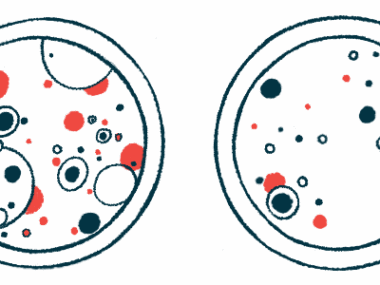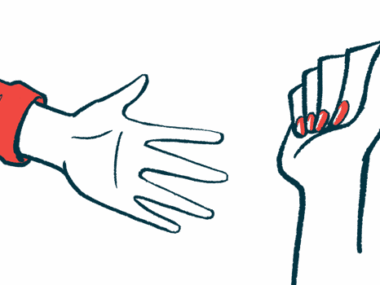Rare-occurring Skin Disease Diagnosed in Three Children
Written by |

Researchers have identified three cases of epidermolysis bullosa acquisita (EBA) in children, which they described in a recent case series.
All three children showed clinical features of the disease, including blisters, scarring, and small cysts on the skin, called milia, and a diagnosis was confirmed with laboratory findings, including skin biopsies and imaging.
According to the research team from the U.K. and Argentina, EBA in children is rare and difficult to diagnose, but the prognosis was good for all three children following proper treatment.
The study, “Epidermolysis bullosa acquisita: a case series of three paediatric patients,” was published in Clinical and Experimental Dermatology.
EBA is caused by antibodies that attack type VII collagen, a protein important for anchoring layers of skin together. This type of epidermolysis bullosa (EB) typically emerges in adulthood.
Symptoms of EBA, including skin blistering and lesions, are similar to those observed in dystrophic EB, a genetic form of EB caused by mutations to the gene responsible for making type VII collagen. These symptoms also are common to other autoimmune skin conditions, making an EBA diagnosis difficult.
Researchers reported three cases of childhood EBA, diagnosed using a combination of clinical features, immune profiling and tissue analysis.
The three patients — a 5-year-old girl, a 12-year-old boy, and 4.5-year-old girl — all arrived at the clinic with a history of blisters on parts of their body, but other clinical features varied between them, the authors noted.
The first patient had blisters on her feet, ankles, knees, and elbows, and milia on her toes. The boy had blistering on his trunk and limbs, with scarring and milia where blisters had healed. The third patient had blisters and milia on her trunk, palms, feet, mouth, and around her eyes.
Both female patients had had sores in the mouth (oral erosions), which the first girl said caused difficulty eating and weight loss.
There was no family history of similar skin disease for two of the children. Family history was not reported for the third child.
Symptoms for all three children were consistent with an EBA diagnosis. To confirm this, doctors performed a number of laboratory tests on skin samples and blood.
In all three, imaging found high antibody levels between skin layers, a feature of EBA. Also consistent with EBA, skin biopsies from two patients showed blistering under the skin and different subsets of antibodies and immune cells, such as neutrophils and eosinophils.
Of note, these antibodies’ distribution patterns within the skin layers can help distinguish EBA from other skin conditions with the same clinical symptoms.
Further analysis of one patient’s blood showed high levels of circulating antibodies. In particular, antibody levels against type VII collagen, the protein associated with EBA, were significantly higher than normal.
These lab tests were important to confirm the EBA diagnosis in all three children, the researchers emphasized.
“As described in our patients, the clinical spectrum is variable and therefore, it is mandatory to perform other investigations to diagnose and treat accordingly,” the researchers wrote.
The first patient was successfully treated with dapsone (an antibacterial medication), and prednisolone (a steroid). The male patient also received prednisolone. He experienced two relapses that were treated with topical steroids.
The third patient had received prednisolone treatment previously for her symptoms, which returned after treatment stopped. Clinicians added azathioprine, an immunosuppressant, to her treatment regimen, but her condition remained severe. After beginning rituximab (an immunosuppressant agent) her symptoms mostly resolved.
The researchers noted that, so far, the children have responded well to the treatment, which is consistent with previous studies of children with autoimmune blistering skin diseases.
“The overall prognosis and response to treatment appears to be more favorable in children than in adults,” the team wrote. “In our experience, although the treatment approaches have been different, all the patients had favorable outcomes.”






